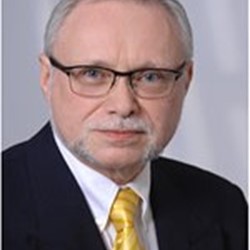A Holistic Approach to Adhesion and Testing - Part 2
On Demand Webinars

Overview
Adhesives and sealants are extensively used in a wide range of applications. Understanding how to achieve and test for strong and durable adhesion is essential for the long-term reliability and durability of products and structures. Key factors that determine the performance of a sealant or adhesive product are (a) the surface condition of the substrate, (b) the processing and application step, and (c) the properties of the product. Test methods use different joint geometries and test parameters and offer a glimpse at the adhesive properties of a product for these very specific conditions. The two-part webinar covers the basic multi-disciplinary knowledge required to interpret the outcome of adhesion tests and its relevance for the prediction of actual in-service performance. Furthermore, options for improving the reliability of adhesive bonds are discussed.
Objectives:
-What are the key factors influencing the performance of adhesive bonds in service conditions?
-What effect does the choice of the test method have on the outcome of the test (bond strength, failure mode)?
-How to select a suitable test method for a given application
-How to improve the reliability of adhesive bonding
Andreas Wolf - A&S Scitech Consulting
Andreas T. Wolf currently works as an independent consultant in the sealants and adhesives area. He graduated in Physical Chemistry at Frankfurt university in 1974 and received a Ph.D. in Theoretical Chemistry from Düsseldorf university in 1978. In 2015, he retired from Dow Corning (now: Dow Silicones) as Chief Scientist of the Global High Performance Building Solutions business focused on Standardization, Technical Application Support and Technology Gatekeeping. During his 36 years with Dow Corning he held various positions in product and technology development, application engineering and scientific support. During the past 40 years, he has also been extremely active in German, European and International standardization. He chaired two RILEM committees on durability (TC139-DBS) and service-life of sealants (TC190-SBJ), joined ASTM International in 1989, is a member of Committees C24 on Building Seals and Sealants, E06 on Performance of Buildings and G03 on Weathering and Durability, joined ISO TC59/SC8 (Construction and Civil Engineering Sealants) committee in 1980 and chaired this committee during the time period 2010-2019. He has served as editor of ten books on the various aspects of sealant chemistry, durability, testing and applications, coauthored one book on sealants in construction, has authored over 200 technical papers and chaired multiple international scientific symposia.
